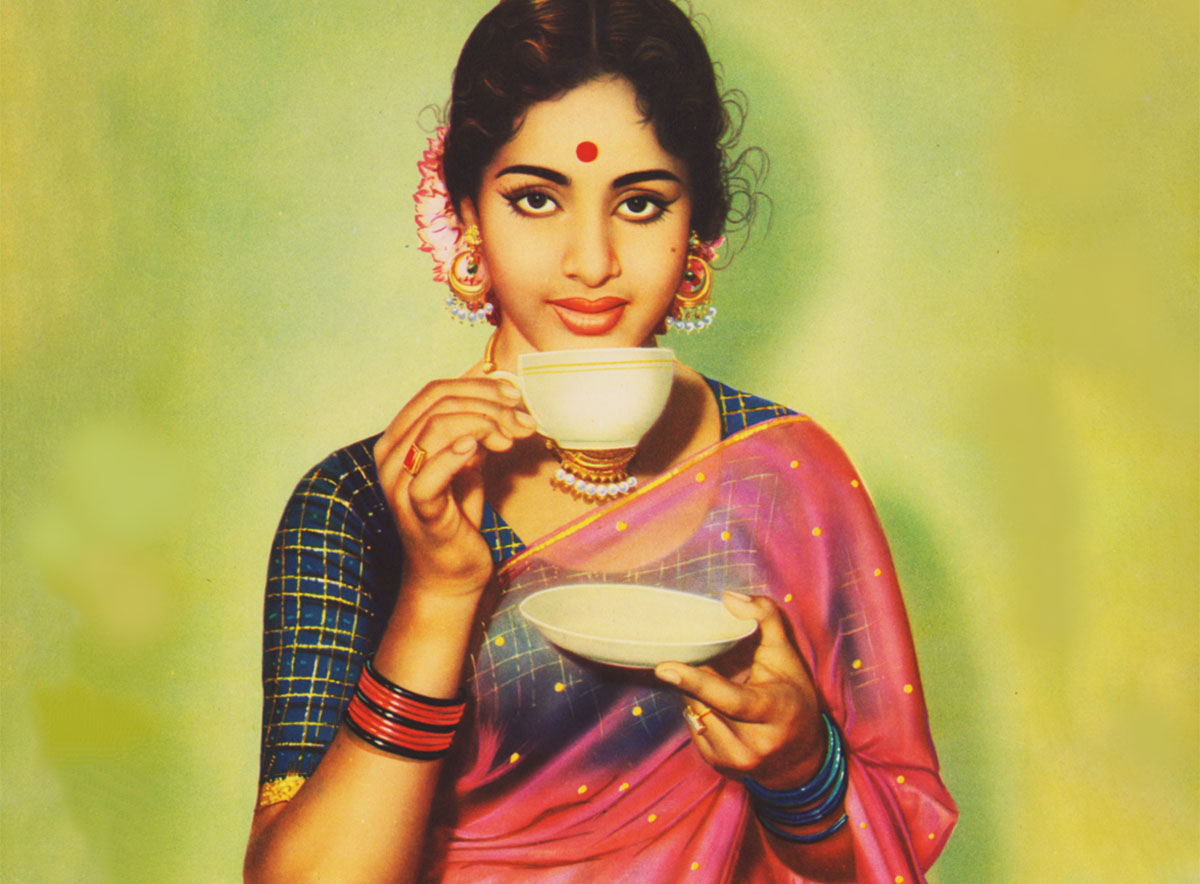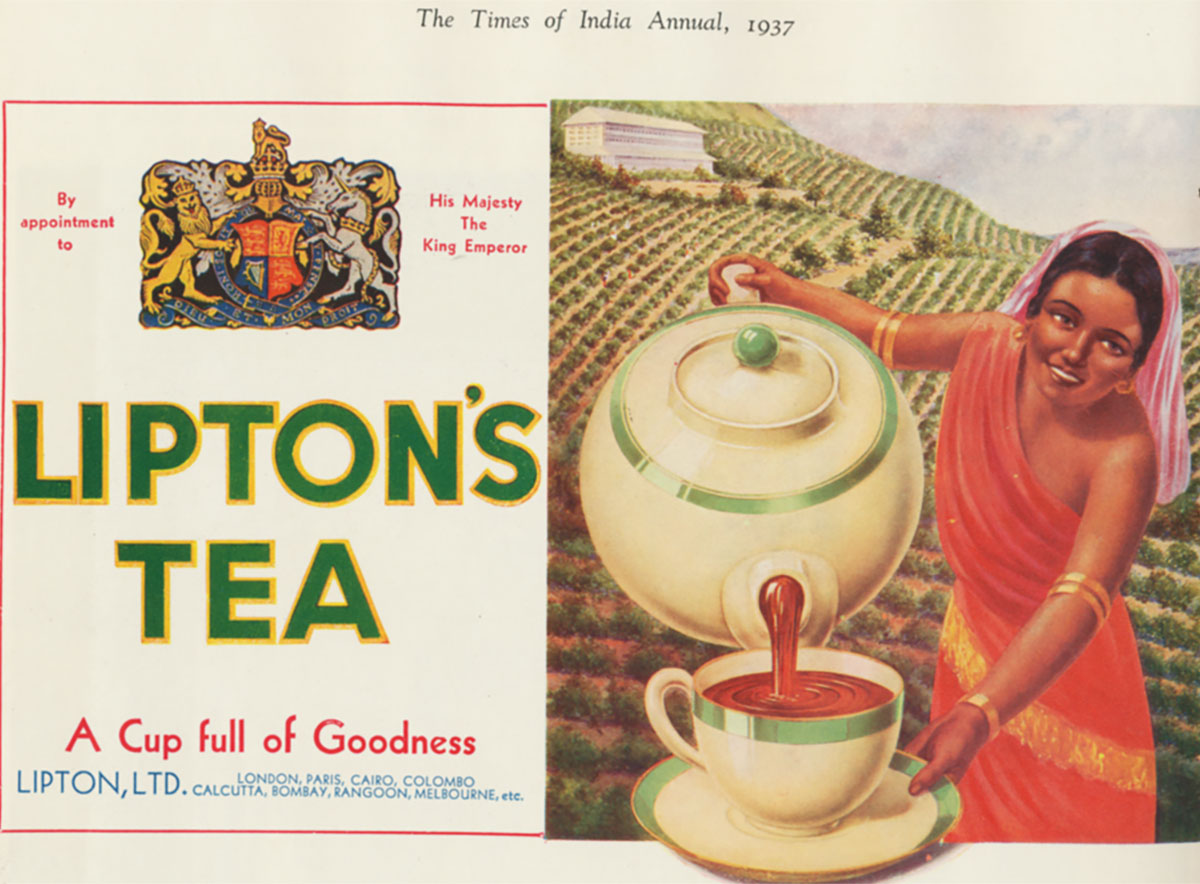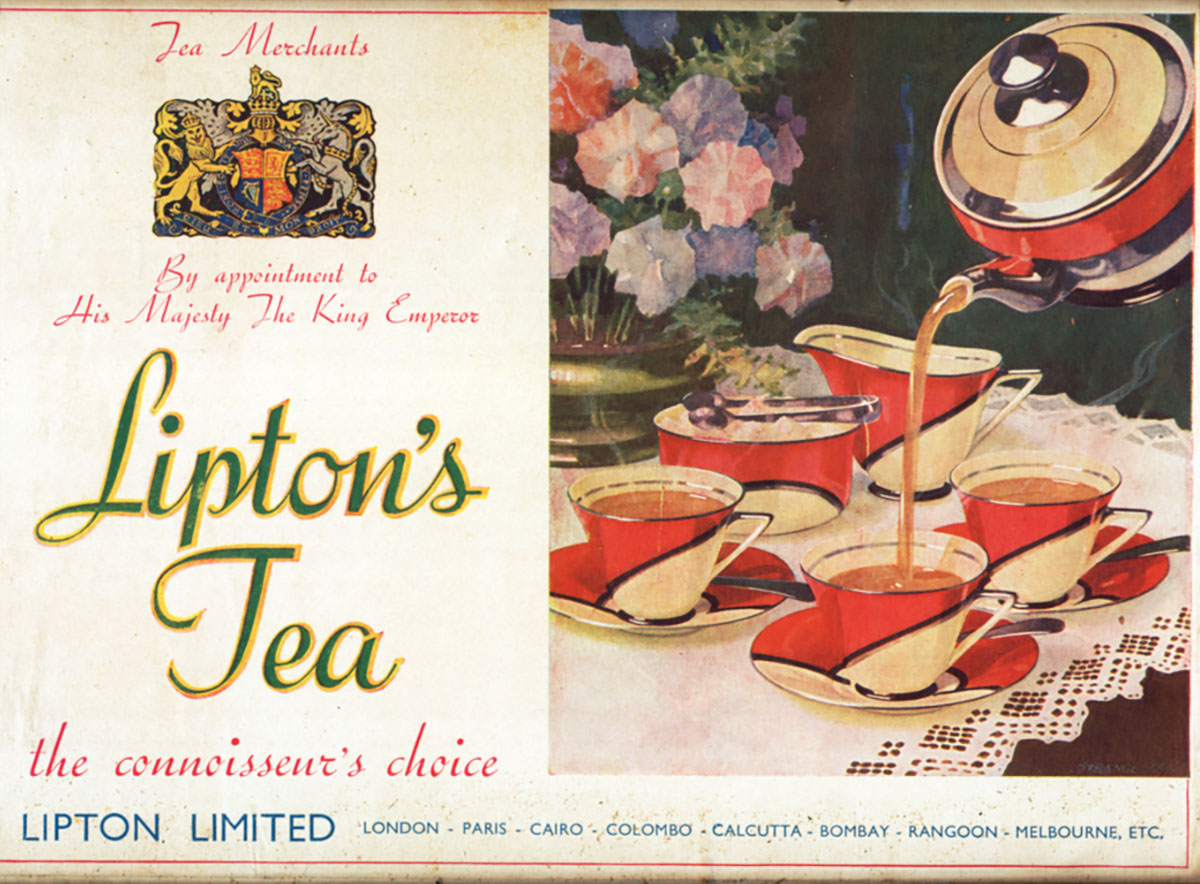PERSPECTIVES
Adverts, Prints, Identity: The Unexpected Story of Tea Consumption in India
In 2021, statistics indicate that India consumed 1.1 billion kgs of tea. While this number, as well as the general fervour around tea consumption, might indicate otherwise, tea drinking is a fairly new activity in the country, only picking up in the mid-1950s. Its rise in popularity was the result of a combination of factors, including the need to strip the beverage of its imperial roots, as well as the shifting narratives around the advertising of the beverage.
Tea cultivation and export in the country began in the early nineteenth century. At this point, most of the tea consumed in Britain was imported from China, and the possibility of cultivating the leaf in areas under British imperial rule, which allowed access to cheap labour and resources, appealed to the trade and fiscal interests of the East India Company. Subsequently, several attempts were made to establish plantations in India using seeds sourced from China, albeit to little success. Since trade from China was still flourishing, attempts to establish India as a possible centre of tea cultivation languished until the early 1800s, when a plant thought to be similar to tea was discovered in Assam, sparking a revival of interest in growing tea in India. Within a decade, this plant was identified as a broad-leafed variety of Chinese tea, cultivation in India was begun and subsequently this new variety of tea was sold and consumed extensively across England. Most of the cultivated tea was exported, and by 1888, India had surpassed China as the largest exporter of tea to the UK.
According to the Indian Tea Association’s 1905 report, there seemed little interest among Indians towards tea. This reluctance may have risen from the perception of tea as an essentially exploitative product, both due to its associations with imperial power in the country as well as the poor labour conditions in the plantations. Thus, tea continued to be extensively exported overseas, and the Company’s attention only returned to India in the early-1930s, following a surplus of cultivated tea that had to be moved. In an attempt to recommend the beverage to the Indian population, the Indian Tea Market Expansion Board (ITMEB) (formerly the Tea Cess Committee) began an advertising campaign that aimed to portray tea as a unifying factor, as opposed to a dividing one, in India. The solution to this was straightforward: the narrative around tea had to change, and perhaps the most impactful way to do this was to reimagine how it was packaged.
ITMEB ads from this period reflect the nationalistic fervour among people in the years leading up to and during the independence movement, which positioned tea as “100% Swadeshi” and which looked beyond differences in culture, caste and class. The logos of brands such as Wagh Bakri, which show a tiger and a goat drinking tea from the same vat, are reflective of the message: tea brings people together, in more ways than one. And it worked, Indian consumption of tea doubled during the period.
Until 1947, when most — if not all — tea plantations were under British control, the advertising around tea indicated that the English were their primary consumers. These ads often depicted Indian labourers — removed from their problematic spaces of indentured labour — serving tea to English sahebs (master) and memsahibs (mistress). Therefore, the most notable shift in post-independence advertising was in the erasure of Englishmen and women from the images on the packages, either completely removing the individual from the packaging — as in the Brooke Bond advertisements for dust tea, which show just the tea package rendered in bright colours — or replacing the white man and woman with Indian men and women, who were characteristically “modern” in their bearing, with Westernised elements in their attire as well as ambiguous class and community markers. The domestic consumption of tea increased exponentially in the 1960s as a result of technological advancements in tea production, which led to the availability of cheaper, and therefore more accessible, CTC (“crush, tear, and curl”) tea. The advertising around tea then saw yet another shift, with the nationalistic fervour gradually pared down; instead, tea came to be advertised as a source of pleasure, depicting filial unity and harmony, and carving the path to a more modernised population that had the ability and means to make purchase decisions.
Where once the advertisements showed the English being served a cup of tea, it was now Indians who were enjoying the same luxury. Therefore, tea became a product that was cultivated in India, by Indians, and for Indians — distantly echoing the slogan of democracy as a system “of the people, by the people, and for the people”.







